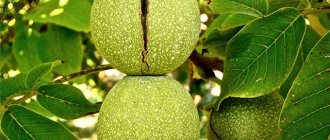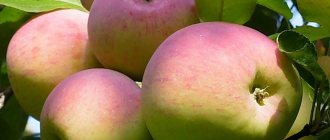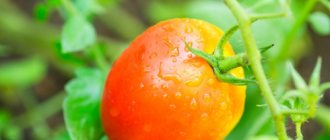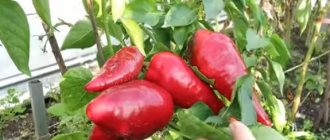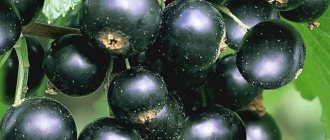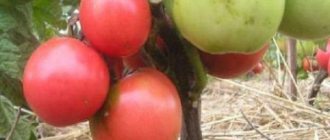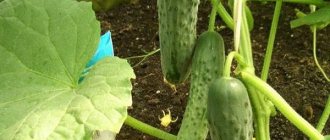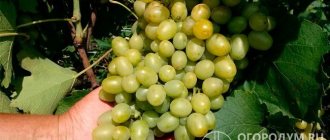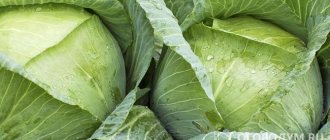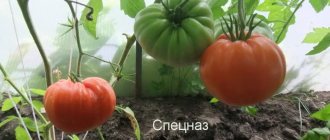Apricot Triumph Northern is a selected varietal species of a heat-loving plant, created by the Soviet scientist A. N. Venyaminov. The southern variety Krasnoshchekiy was crossed with the Transbaikal variety Northern Ranniy. The first gave the Northern Triumph the size and taste of the fruit, the second - resistance to cold and drought. Initially, the crop was grown in the center of the black earth zone. Then the variety spread to central Russia, the Urals, and Siberia. Now gardeners are growing the apricot variety Triumph of the North near Moscow, in the Leningrad region.
History of selection
The Triumph Northern apricot variety was bred by Soviet scientist A. N. Venyaminov. The apricot varieties “Red-cheeked” and Trans-Baikal “Northern Ranniy” were chosen as breeding samples. From one, Triumph Northern received a larger size and pleasant taste of fruits, and from the other, greater yield and resistance to severe frosts were obtained.
Initially, the designated apricot variety began to be grown in the Black Earth Region, and over time it spread to other regions of Russia, including the Urals and Siberia.
Apricot is excellent for growing in the Urals and Siberia
Growing from seed
Gardeners can grow Northern Triumph from seeds by receiving free planting material. Growing order:
- Choose a beautiful, large, fully ripened fruit. The bone is removed from it.
- Soak the bone in water for 3-4 days. Then transfer it to a container filled with moistened sand or moss.
- The container is covered with plastic film with holes made in it.
- When the seed, having cracked, sprouts, it is transplanted into the soil to a depth of 7 cm.
Planting in the soil is carried out in summer or spring. The optimal time is May. The soil is periodically moistened and then mulched with humus or peat. Over the summer, a seedling can grow 1 m, and after a year it can be transplanted to a permanent place or used for grafting onto a rootstock.
Description of the variety
Apricot variety Triumph Northern is a fruit tree that can grow up to 4 meters in height. The trunk part is quite powerful and a large number of equally strong branches are formed on it. If you do not prune the branches, the height of the tree will only increase every year. In addition, the crown will turn out to be very abundant and lush, and this will negatively affect the yield.
The foliage is a rich green color, and during flowering the tree is covered with a huge number of white buds, with small pink streaks on each petal. In the photo you can see what a blooming apricot tree looks like in early spring. You can also see a photo and description of the monastery apricot variety.
Blooming apricot tree
It should be said that some buds may lack stamens - such a defect is often formed due to a lack of sunlight during the budding period.
The fruits of the Northern Triumph apricot are quite large (35-60 grams), yellow-orange in color with a characteristic red-ruddy side. Sometimes you can find yellow-pink apricots. Such color differences directly depend on the planting location and growing region, as well as on the amount of sunlight during the period of fruit growth and ripening.
The taste of apricot will differ depending on the climate zone. For example, in the south the fruits are sweeter than in the north. Separately, it should be noted that apricot kernels are devoid of bitterness, so they are often used in cooking. It’s even useful to know what apricot kernels are called and what properties they have, since they are also used in cooking.
The tree bears large fruits weighing 35-60 grams
Table: how, when and with what to feed apricots?
| Fertilizer | Period | Quantity |
| Nitrogen fertilizers (urea) | Before flowering, after flowering, after the ovaries fall off | 35 g per 1 m2 |
| Potassium fertilizers (potassium nitrate) | After the apricots ripen | 50 g per 1 m2 |
| Phosphate fertilizers (superphosphate) | Before flowering, after flowering | 60 g per 1 m2 |
| Organic | Once every 2 years (early spring or late autumn) |
|
It is worth keeping in mind that apricot needs both mineral and organic fertilizers.
Reproduction
You can grow a Northern Triumph apricot in your own garden not only by purchasing a seedling in a special nursery or store. You can increase the number of fruit trees using two methods of propagation.
Cuttings
In this case, it is necessary to cut young shoots from an adult apricot seedling in the spring, and then support them for some time in a growth stimulator. Next, the branches should be buried in the soil, and during the first month, make sure that it does not dry out.
After about 2-3 weeks, fibrous roots appear on the cut shoots, and closer to autumn they form their own root system. The finished seedling can be replanted only the next year after rooting. Do not forget that the cuttings will need to be covered for the winter so that they do not freeze.
Cuttings are carried out in the spring from an adult apricot
Budding
You can also perform budding. To do this, you need to cut off a young branch about 2-3 centimeters long at the end of July or at the beginning of August. It must certainly have a healthy and formed kidney. Then the cut cuttings must be kept in water for several hours. Next, you should select a fruit seedling from your garden plot and graft a prepared apricot branch onto it.
The scion site should be on the trunk of the selected tree at a height of about 5 centimeters from the ground. For the winter, you absolutely need to wrap the grafted branch in paper, and in the spring, remove the covering material. In this case, in the spring you will need to cut off part of the rootstock, which is located above the grafting.
Apricot budding should be carried out at the end of July or at the beginning of August
Disease Control
Northern triumph is resistant to many diseases of fruit trees, but some of the diseases still threaten it.
Table: problems characteristic of the variety and methods of dealing with them
| Disease | How it manifests itself | What to do? |
| Moniliosis | The fruits are covered with brown spots of rot and gray dots - concentrations of fungal spores. | Prevention: weeding, removal of fallen leaves, whitewashing of trunks. Control measures: spraying with a solution of 100 g of copper sulfate, 100 g of lime per 10 liters of water. Spraying with Horus (according to instructions) 3-4 times - before flowering and then at intervals of a week. |
| Cytosporosis | Rapid death of parts of tree branches and shoots. Brown spots on leaves. Cracks in the bark. | Removing damaged parts of the plant. Spraying with Bordeaux mixture or copper oxychloride before the leaves appear in the spring. |
| Verticillium | The leaves at the bottom of the tree turn yellow. | Burning affected branches. Spraying with Bordeaux mixture in spring, as well as in autumn during leaf fall. |
| Clusterosporiasis | Spots appear on the leaves, which then turn into holes. Cracks on the shoots. | Spraying in early spring with Bordeaux mixture and copper sulfate (3 liters per tree). |
| Insect pests (aphids, codling moths, hawthorn butterfly caterpillars) | Visible insects that feed on the sap of leaves and shoots, causing them to dry out. | Mechanical removal of pests from trees. Spraying with a 3% solution of Bordeaux mixture. Spraying with Entobacterin (according to instructions). |
Planting nasturtium around the perimeter of the tree trunk will prevent aphids from attacking the apricot.
Photo gallery: diseases of Northern Triumph
Moniliosis quickly passes from diseased fruits to healthy ones
Clusterosporia blight causes holes to appear on the leaves.
Verticillium leaves turn yellow
One of the signs of cytosporosis is affected tree bark
Features of planting seedlings
One of the main problems when growing Triumph Northern apricot variety is the purchase of seedlings. After all, purchasing it secondhand does not always guarantee that the tree matches the required variety. In addition, quite often sellers at markets sell seedlings grown independently from seeds without appropriate vaccinations. Therefore, it is recommended to buy seedlings directly from specialized nurseries. This guarantees not only compliance with the grade, but also confidence that the seedling was properly cared for.
Recommended timing
First of all, it must be said that this apricot variety begins its growing season quite early. If the tree is planted in cold regions of Russia, for example in the Leningrad region and the Moscow region, then the seedlings should be planted no later than mid-April. For the southern regions, planting is planned in the autumn, but in this case it must be done before the onset of frost.
Should be planted during the growing season
Choosing a suitable location
Apricots are, in principle, heat-loving plants, but thanks to selection there are varieties that can grow in cold regions. Therefore, the landing site should be chosen on the south side of the plot, and at the same time it should be protected from possible gusts of the North wind. The barrier may be a fence, a building wall, or densely planted vegetation.
If there is a possibility of rising groundwater in the area, then the seedling should be planted in a place with a slight slope. You can do it yourself; this will allow water to drain during heavy rains and not stagnate in the root zone of the tree.
If the groundwater on the plot is located close enough to the surface, then the apricot seedling needs to be planted on a hill. Its height should be about a meter, and its diameter should be at least 2 meters.
Important! High yields of the Northern Triumph apricot variety are often observed on neutral or slightly alkaline soils.
The planting site must be chosen on the south side of the site
Neighborhood with other cultures
Among the features of the Northern Triumph apricot, its individualism should be noted. In addition to the fact that this variety of fruit trees is self-fertile, for comfortable growth it requires the right choice of what can be planted next to the apricot. Other varieties will be favorable neighbors; for example, you can study the description of the Alyosha apricot variety, but it is not recommended to plant other types of fruit trees in close proximity.
It is best to plant other apricot varieties nearby
Selection and preparation of planting material
It is best to buy Triumph Northern apricot seedlings in special nurseries or stores. In this case, special attention should be paid to the root system of the tree. It should be free from disease factors and any types of damage. A sign of a properly formed tree is considered to be 2 times the volume of the root system beyond the crown.
If the purchased apricot seedling is in a container, then it is desirable that it be transparent. This will allow you to clearly see the state of the tree’s root system.
It is worth noting other important indicators for choosing high-quality planting material:
- It is best to purchase apricot seedlings for planting at 2 years of age if it is to be done in the fall.
- The height of the seedling should be from 1 to 1.5 meters. If there are deviations in the growth of the tree, this may indicate improper care for it.
- The root system should consist of one main root and 2 or 3 lateral shoots, which should be about 20-25 centimeters in size.
It is imperative to inspect the trunk; a pronounced grafting zone should be visible on it, which indicates that the seedling corresponds to the required variety.
The seedling must have a height of 1 to 1.5 meters
Site preparation
It is recommended to plant an apricot tree of the Northern Triumph variety in the spring, but preparations should be made in the fall. For example, you need to dig a hole about 70 centimeters deep; you can lay out a drainage layer in it to reduce the likelihood of water stagnation. If there are several seedlings, then planting holes should be dug at a distance of at least 5 meters from each other.
Important! When preparing a place for planting, it is necessary to remove weeds around the planting hole and level out uneven surfaces to avoid possible stagnation of water. This, in turn, will eliminate foci of fungal and infectious diseases that develop in a humid environment.
For planting, the hole should be no deeper than 70 cm
The process of planting young seedlings
In order for an apricot seedling to take root well and quickly settle down in a new place of growth, it is necessary to plant it correctly. To do this you will need to do the following:
- Initially, you need to dig a hole with a diameter of 60 cm and a depth of 70 cm.
- Make a nutrient mixture consisting of the following components: peat, clay, sand, garden soil. The number of components must be in equal proportions.
- The prepared mixture must be poured into a dug hole in a mound and the root system of the apricot tree should be placed on it.
- Then you need to place a peg in the hole with the seedling and cover the roots with soil, but you must certainly water each layer of soil being laid.
When immersing the root system in a hole on a mound, you need to install the seedling so that the root collar on the tree remains above the ground at a distance of 2-3 centimeters.
Video instructions for planting apricots
Place for apricot Triumph of the North
Apricot is a southern plant that responds positively to a warm and bright habitat. Therefore, the southern or southwestern side of the garden, protected from the winds, is suitable for Northern Triumph. It should not be a lowland where cold air sinks. A small elevation, possibly artificially created, is a favorable factor for the growth and fruiting of an apricot tree.
Suitable soil for a fruit plant is light, with good air and moisture permeability, neutral or slightly alkaline with an acidity pH of 6–7.
The appropriate soil acidity level for apricot is pH 6–7.
The root system of the Northern Triumph is not very large - it is buried approximately 40 cm into the ground. Groundwater should not be located closer than this distance.
Rules for caring for an apricot tree
Caring for the variety is quite simple. Timely watering and fertilizing, as well as eliminating weeds, are the main rules when growing a fruit tree. Pest and disease control is also important.
Prevention and protection against pests and diseases
Northern Triumph apricot is considered a variety that is resistant to infectious and fungal diseases, but it is still worth taking preventive measures to avoid their occurrence. If you ignore the rules of care, the apricot tree can be affected by cytosporosis, vercillosis, as well as moniliosis and apricot gum. Such diseases can be easily eliminated with copper-containing preparations, but it is better to prevent their occurrence than to treat the tree afterwards.
As for pests, aphids, codling moths and hawthorn can appear most often. You can fight them with the help of special insecticides. You can also use folk remedies, for example, soap solution or tobacco tincture.
Cytosporosis is one of the apricot diseases
Types of pests and methods for eliminating them
| Name | What can you do to get rid of it (medicines) | Preventive measures |
| leaf roller | "Decis", Inta-vir | Digging up the tree trunk area and whitewashing the trunk and skeletal branches |
| codling moth | Chlorophos (0.2%) Ethnobacterin (0.5%) | It is necessary to loosen the soil in the root zone of the seedling |
| Aphid | "Fufanon", "Fitoferm" | Eliminate anthills near the tree, as well as plant nearby flowers and plants that can attract beneficial insects, for example, ladybugs. |
As a preventive measure, the apricot tree should be treated with copper-containing preparations in early spring, until the buds begin to bloom on the seedling. In addition, whitewashing should be done in spring and autumn.
You also need to remove old and damaged branches, since pest larvae and spores of fungi and bacteria can hide in them. To prevent apricot tree disease, it is necessary to remove the leaves after they fall.
Leaf roller - causes significant damage to the tree
Watering
A young apricot seedling needs to be watered quite often, especially after planting. It is necessary that the soil in the root zone does not dry out, but at the same time, water should not stagnate. If the weather is dry outside, then a young tree will need 2-3 buckets of water every 2 weeks, and an adult will need about 4-6 buckets.
Important! The root system of a seedling grows twice as wide as the crown volume, so the tree needs to be watered not only in the root zone. Additionally, it is necessary to spray the foliage with water if the weather has been dry outside for a long time.
Abundant watering must be carried out until August, and then stopped until the period when the foliage on the tree turns yellow and begins to fall off. At this time, you need to water the seedling so that the soil is moistened to a depth of 1 meter. This will require about 7-8 buckets of water - this volume is needed for mature trees.
A young tree needs 2-3 buckets for watering
Feeding scheme
Every plant requires nutrients for normal growth and development, and the same applies to the northern Triumph apricot variety. Fertilizing should be done according to the appropriate scheme:
- In early spring (preferably in the snow), apply urea to the tree trunk area according to the instructions on the package.
- When the flowering period ends on the seedling, it should be re-fertilized with urea.
- During the period of fruit ripening, it is recommended to feed the tree with potassium fertilizer (40 g per 1 sq.m.).
- After the end of the vegetative period, the apricot seedling needs to replenish the nutritional reserves in the soil by adding phosphorus fertilizer (50 g per sq.m.) to the tree trunk zone.
Additionally, you can feed the fruit tree with rotted compost or humus at the rate of 1 bucket per 1 sq.m. It is recommended to apply the indicated types of fertilizer in autumn or spring.
Urea increases disease resistance
Pruning and crown formation
It is worth noting that the Northern Triumph tree is tall, so harvesting can be difficult. To facilitate the process of picking fruits, it is recommended to trim branches that grow upward. In addition, removing branches will make the crown of the apricot tree more lush and tidy.
Also, thanks to proper pruning, you can increase the yield of the seedling. In this case, the following must be taken into account:
- After planting in a permanent place of growth, the young tree should be pruned only after a year.
- When you first prune, you should shorten the main branch growing upward by about a third of its length. If there are strong side branches, they also need to be cut off, but not more than by a third.
- After 2 years, you need to remove the damaged branches, as well as trim those that have begun to grow upward or inside the crown.
- In the 3rd and 4th years, the crown should be formed from strong branches so that it has a spherical shape.
When an apricot tree enters its fruiting period, the growth of new shoots slows down. Pruning should be done annually to prevent the crown from becoming dense. It is also necessary to shorten branches that grow upward.
Important! Tree pruning should only be done in early spring before buds begin to bloom.
The first pruning should be done only after a year
Preparing for winter
In order for an apricot tree to survive the winter, it must be properly prepared for winter. First of all, you need to apply fertilizer at the root and water the seedling generously.
You should also whitewash the trunk and skeletal branches of the tree. Thanks to this, you can prevent the formation of burns on the bark from sunlight and get rid of pests that hide in it for the winter. It is recommended to lift the young branches off the ground so that rodents cannot feast on them in winter.
It is forbidden to wrap the branches and trunk of the seedling with fabric material, since after rain and snow it becomes wet, and a humid environment is the best testing ground for the formation of infections and fungi.
Whitewashing will prevent the formation of burns on the bark and get rid of pests
Preparing for winter
Before the winter cold, the tree trunk is subjected to a special treatment that provides protection from rodents and sunburn throughout the winter and spring - ordinary whitewashing. You need to whiten both the main trunk and thick branches.
The method for preparing a solution for whitewashing is to mix 0.5 kg of lime with 10 liters of water. You can add 2 tbsp. spoons of copper sulfate. Another option: clay, mullein and lime in equal proportions. Apply to wood, stirring the solution constantly.
In addition, you need to carefully (to a depth of no more than 10 cm) dig up the soil around the tree and wrap the trunk with material that allows air and water to pass through. Ruberoid and polyethylene are completely unsuitable for this purpose. Nonwoven materials and spruce branches are suitable. Such measures will protect the root collar and bark above from the cold winter air.
Harvest and storage
Apricots of the Northern Triumph variety can be eaten fresh, and the fruits can also be dried (dried fruits), jam and compotes for the winter. For such purposes, ripened fruits should be collected. If apricots are needed for transportation, then harvesting must begin when the fruits are at the stage of technical ripeness.
Advice! To ensure that harvested apricots can be stored longer, they should be picked on a sunny day when there is no dew on the fruits.
The shelf life of picked apricots is only 1-2 weeks (given that they were placed in the refrigerator). If ripe fruits are left in a warm place after picking, the flesh will become hard.
The fruit makes delicious jam
Drought resistance, winter hardiness
Hydrangea Hot Red - variety description, planting and care
Of course, one of the main advantages that the variety can boast of is the high frost resistance of wood - up to -35 degrees Celsius. And flower buds are almost not far behind - they easily tolerate frosts down to -28 degrees.
The variety can also boast of high drought resistance - if there is good rain at least a couple of times a month, then there is no need to water it at all.
The tree is strewn with fruits
Reviews
In conclusion, it must be said that the northern Triumph apricot variety lives up to its name. Indeed, thanks to selection, a type of heat-loving apricot trees was obtained that can be grown not only in the southern regions, but also in the cold climatic zones of Russia, including in the Moscow region.
Are you thinking about planting a northern Triumph? Share in the comments what you liked about it!
